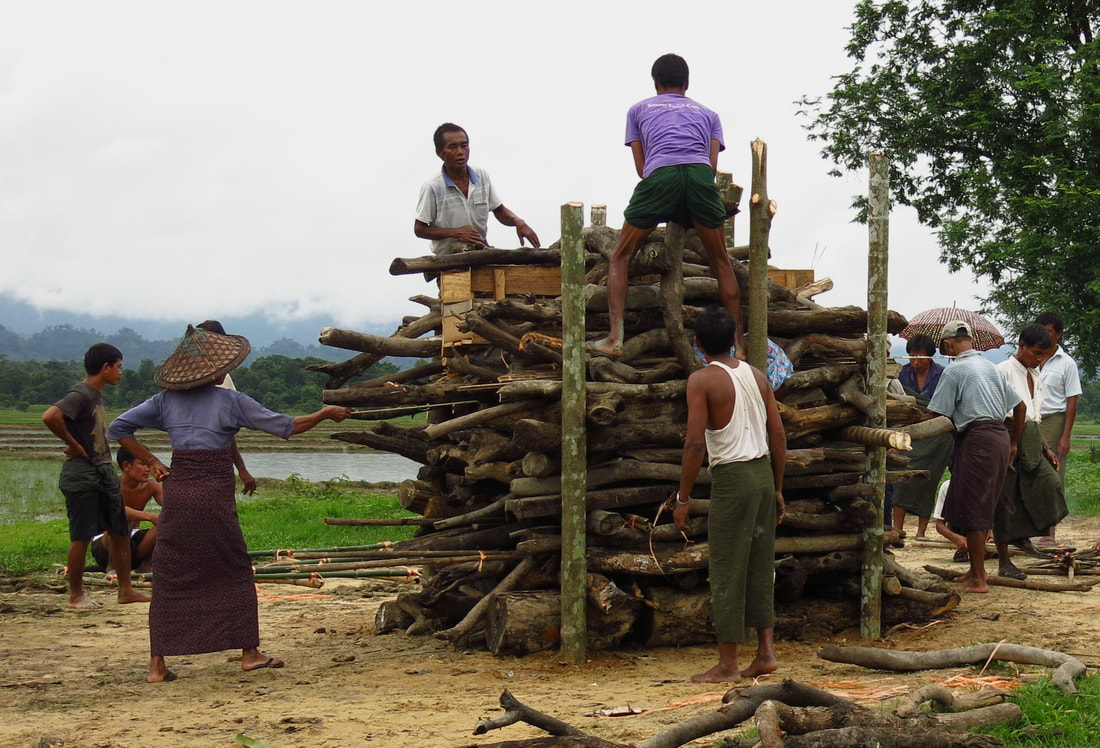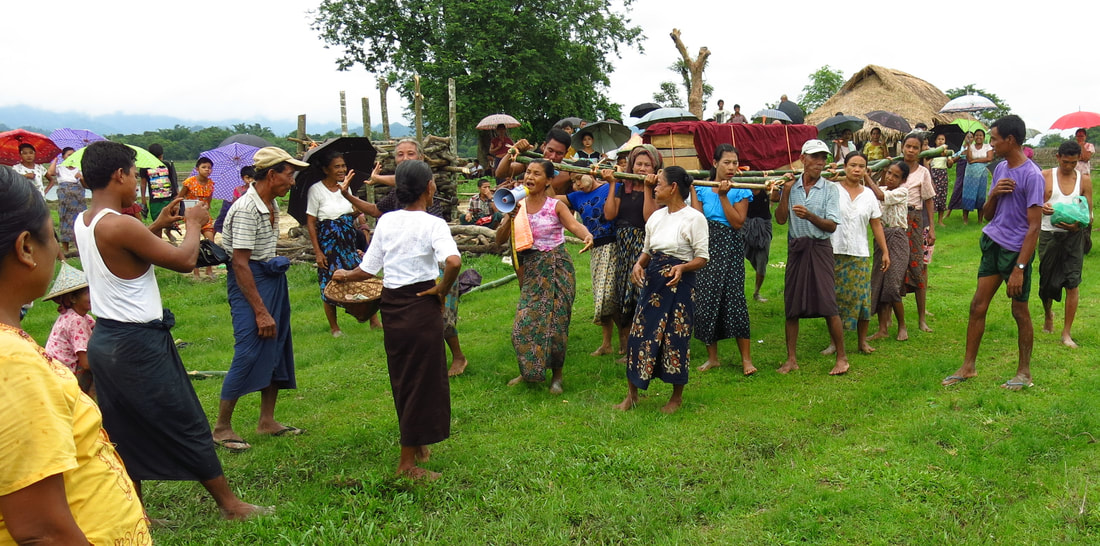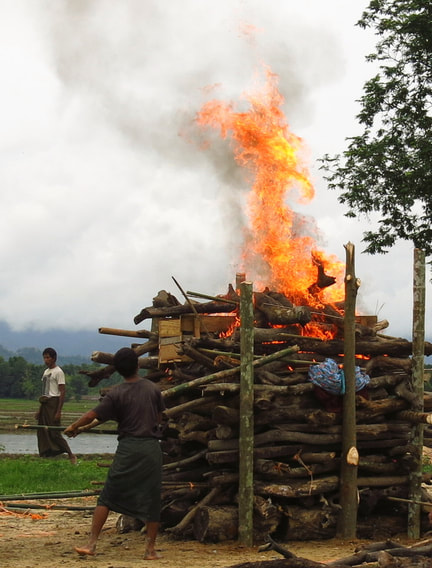|
On Tuesday night, there was the death of a monk. He was older and suffering from lung cancer. I am not clear if everyone in the village really comprehends the effects of such a disease. I think that some might simply believe it to be some form of voodoo or black magic that rots away at the core of the soul. A large funeral pyre of 7 or 8 feet was erected to the north of the village. A procession was conducted through the village with the body in a slim wooden box flanked in the crimson red of the monk’s final robe. Many of the villagers followed the body, each with a colourful umbrella to shield them from the threatening grey skies above. The coffin was held by ten or twelve villagers who then sang and danced in rhythmic tradition to celebrate a life well lived. This dancing is only done for older people who have had a full life; when a young person dies the mood is more sombre. As the procession passed by our house, our student invited us to go to observe the local tradition. ‘No shoes this time teacher’ was the instruction to Van and I as we ensured our knees and shoulders were covered in respect. We soon saw why shoes were not necessary as we plodded our way through the sodden rice paddy fields to the cremation area. Gripping to the fence and hoping against hope there were no snakes, rats or sticks lurking in the calf-deep grey, Van and I strode through the fields.
After dancing, which is mainly done by the women of the village, they retreat whilst the body is stripped of its clothes. The body, complete with coffin, was added to the pyre which was then doused in a healthy amount of fuel to ensure a good burning. There was an almighty clash as the oxygen caught with the fuel to begin the combustion. Someone stays nest to the pyre throughout the burning process, which usually takes 24 hours; if it rains or doesn’t catch properly then it will need to be tended to until the earthly body is no more than ash to join with the soil. As we retreated, we traversed a longer path to avoid crossing the new hospital. Coming from a funeral, locals believe the black negativity from the other side should not be transferred to newly built places for fears of repercussions and bad omens. We have similar superstitions in my village in England. While neither I nor my student hold with these ideas, it is of course always a good idea to respect the views of the majority in such situations. Chloe Smith NEH Director of Studies and Teacher Trainer Related Posts: Life in the Monsoon Season Arriving in a Village The Head Monk's Way of Thinking Teaching the Head Monk The Head Monk's English Classes Observing the Monk's Class
Comments
|
This section will not be visible in live published website. Below are your current settings: Current Number Of Columns are = 3 Expand Posts Area = 1 Gap/Space Between Posts = 20px Blog Post Style = card Use of custom card colors instead of default colors = Blog Post Card Background Color = current color Blog Post Card Shadow Color = current color Blog Post Card Border Color = current color Publish the website and visit your blog page to see the results |
|
© New Education Highway 2024
Except where otherwise noted, content on this site is licensed under a Creative Commons Attribution 4.0 International License. |




